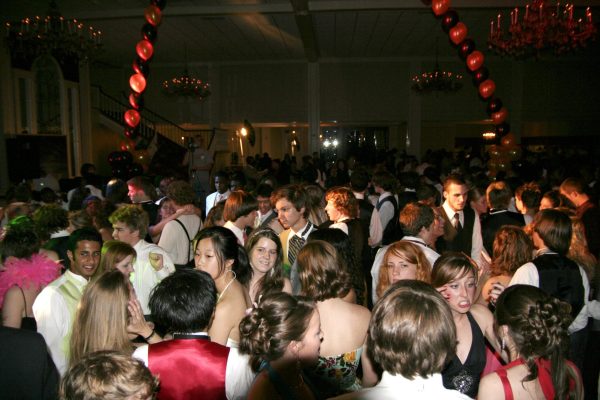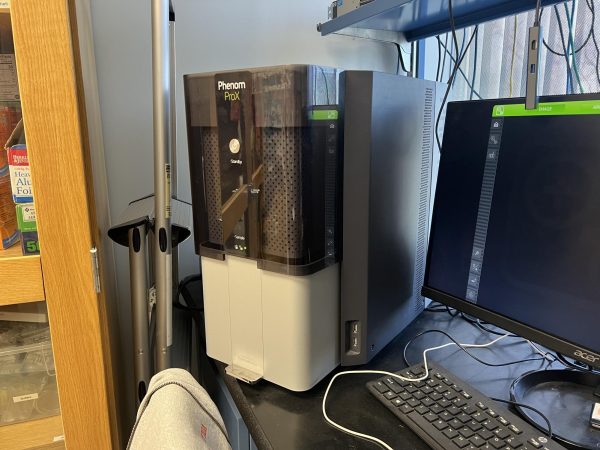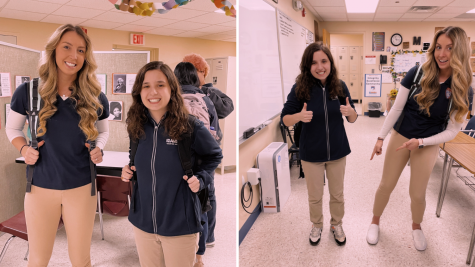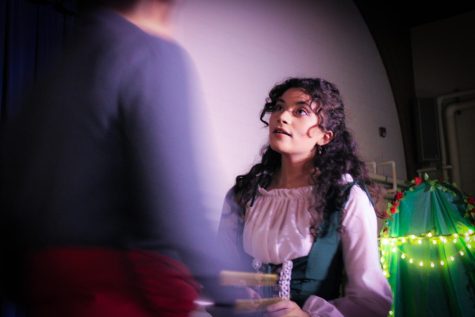AMSA nurses are on the frontline of the Covid battle
Nurse Maureen Searl and her colleagues were testing up to 60 students and staff every morning at the height of the Omicron spike.
At the start of this month, when AMSA shifted Covid testing from on site to at home, the school’s nurses were finally able to take a breath. During the first five months of the school year, AMSA nurses spent their mornings testing a line of students and staff so long that it stretched out of both entrances of the health office.
In a place where everybody has more than their fair share of work, the nurses were stretched to their absolute limits.
In her email to the AMSA community announcing the testing shift, Executive Director Ellen Linzey wrote that the nurses were at a “breaking point.”
Now, with an abundance of at-home testing kits and a decrease in Covid infections, the nurses have been given a kind of reprieve. But the road to tranquility was a long one for Maureen Searl, Nancy Sawtelle, and Shannon Zervos.
“Work is tearing us down,” Nurse Searl said when school resumed in January. “There are some days that I have to leave work as late as 9 p.m., instead of 3.”
At 7:30 a.m., most AMSA students and staff are holding their coffee cups and listening to their favorite tunes, either on their way to school or in a building waiting for the day to begin. At the AMSA health office, the nurses’ hearts raced as they drowned in Covid tests.
As the Omicron variant spiked, the line of students waiting for testing became even longer. The nurses tested around 60 students and staff every morning. It was an unimaginable grind unseen by the vast majority of the school community.
For every student who did test positive, the nurses faced three tasks: completing state guidelines; putting together instructions on how to properly quarantine; and emailing teachers about a student’s positive case.
The nurses were also responsible for contact tracing, and there was endless paperwork and email to track, as there were approximately 140 Covid cases at AMSA from the start of January to the middle of February alone.
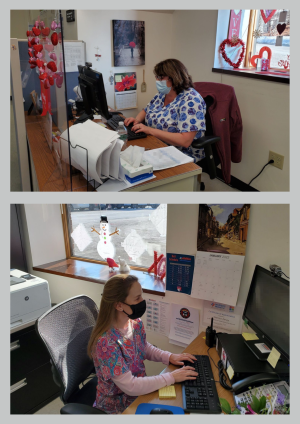
“On many occasions, I feel like I’m working at a clinic,” Nurse Sawtelle said.
Imagine being hired to work as a part-time employee, and suddenly you are working full-time under dangerous conditions. Nurse Zervos, hired to work from 9 a.m. to 2 p.m. three days a week, now works as many as five days a week, starting her shift as early as 7:30 a.m.
“Monday was my off-day,” Nurse Zervos said last month. “But right now, it isn’t.”
The nurses have also faced staff shortages. During the week of Dec. 13, two of the three nurses were out, as one had Covid and the other had a family emergency. AMSA was forced to open the health office solely to students and staff dealing with Covid-related matters or clear emergencies.
After winter break, six parents volunteered to help sort the line and take temperatures for Covid testing.
“They were a great help,” Nurse Searl said. “It really made things efficient.”
The guidance counselors also helped the nurses write emails to teachers when a student tested positive.
The big break came when state agencies provided schools with a kit with two tests every two weeks for each student and staff who opted into the at-home program.
“This gives us a lot of flexibility to spend more time focusing on symptomatic cases,” Nurse Searl said.
Ever diligent and ever at work, the school nurses continue to encourage students and staff to wear their masks over their noses, throw away their masks after one use, and do proper hand-washing throughout the day.
They are on the frontline, even if they are behind the scenes.
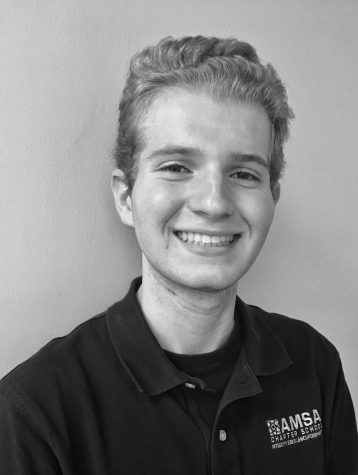
Philippos is a senior and has been attending AMSA since 6th grade. This is his first time writing for The AMSA Voice, and he hopes to expand his ability...


